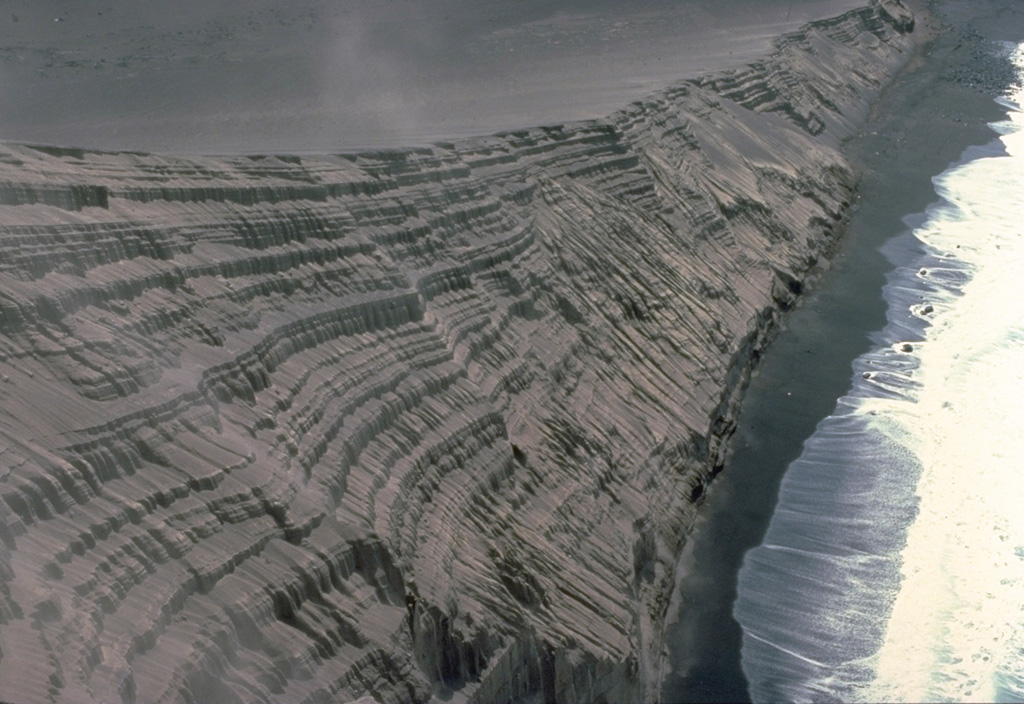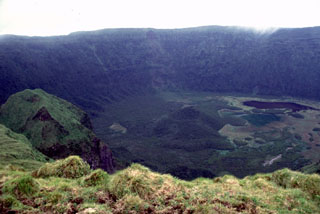Global Volcanism Program | Image GVP-05194

The new pyroclastic cone formed during the 1957-58 Capelinhos eruption has been extensively eroded by the sea, exposing this cross-section of the cone. The thick stack of tephra layers formed by fallout of pyroclastic material during individual eruptive pulses illustrates the process by which pyroclastic cones grow. Initial eruptions were submarine, but these tephra layers were formed by subaerial eruptions after the vent rose above sea level.
Copyrighted photo by Katia and Maurice Krafft, 1980.
Copyrighted image used with permission. All Rights Reserved. Contact photographer for any usage requests.

Fayal
